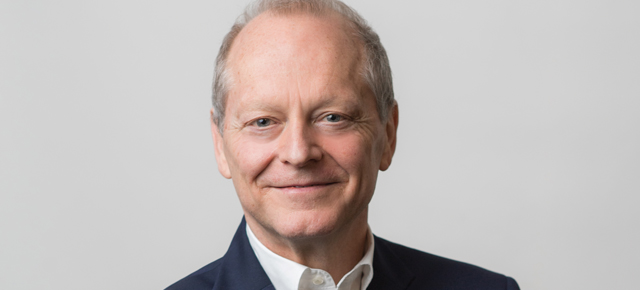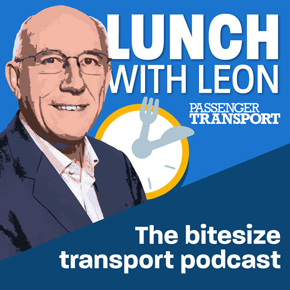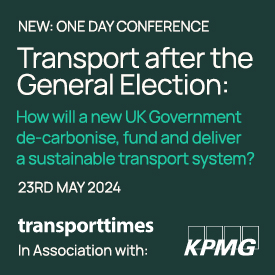Journeo enhances support for connected journeys with revolutionary cloud-based products and services that will connect millions of journeys

Earlier this year, 21st Century Fleet Systems and 21st Century Passenger Systems became a single brand – Journeo. It is a move that places the company’s cloud-based products and services at the heart of a revolution that will connect millions of journeys.
“Our innovative solutions are developed hand-in-hand with customers”, explains Russ Singleton, Journeo’s CEO. “It was important to us that our company identity reflects the work we have undertaken, and continue to do, with our customers as we develop new products and services that meet their changing needs.”
21st Century was established in the early 2000s and grew into one of the leading installers of CCTV and safety systems on buses in the UK, France and Sweden. Russ took over in 2013 with a plan to form a larger, broader technology group serving transport operators, networks and hubs.
He saw a fragmented market with disparate technologies and service providers, and systems that were costly to maintain or upgrade. “Many were proprietary, so unable to communicate with each other and there was a clear opportunity to bring these together for the benefit of both passengers and operators.
21st Century was a great starting point as the business had a lot of experience installing and maintaining safety critical on-vehicle systems
“21st Century was a great starting point as the business had a lot of experience installing and maintaining safety critical on-vehicle systems,” Russ adds. “But we needed R&D and software capabilities so acquired the RSL Group in 2015 and formed 21st Century Fleet Systems, focusing on the needs of transport operators, and 21st Century Passenger Systems, focusing on the needs of local authorities and transport executives.”
Russ’s vision was to create an intelligent transport platform using the combined expertise of both businesses and apply new technology in innovative ways. “The Internet of Things (IoT) was not a term that you heard frequently back then, and when you did, you did not associate it with cost efficiency and legacy systems integration.
“We were determined to change this and convinced that with targeted development work, we could extend the life and performance of customers’ existing assets while assimilating the latest technologies.
“Our CTO, Dr Andy Houghton established an R&D team in 2016 and things moved quickly as we adopted an open-platform, standards-based approach. It really felt like ourselves and the whole industry was on a journey towards more converged solutions.”
Key to this process was the launch of the cloud-based Journeo Portal, a solution designed to bring together systems used in everyday operations by public transport operators and networks. A simple, intuitive interface allows vehicles and other assets to be tracked and monitored. Meanwhile, video, and other data can be securely accessed and stored for incident investigation or analysis.
What we’re doing is taking legacy systems and leveraging IoT technology and cloud-based applications to improve performance and reduce costs for the service providers
“What we’re doing is taking legacy systems and leveraging IoT technology and cloud-based applications to improve performance and reduce costs for the service providers,” Russ explains.
“We are focused on delivering a highly secure and scalable solution that can adapt as the customer needs evolve. We are also keen to ensure our solutions can deliver the same level of cost and efficiency benefits for a small, targeted project in the same way they do for a city or large-operator rollout.”
“Since we launched the Portal in 2019 it has grown rapidly and by the end of 2022 over 10,000 buses, trains and coaches will be connected. Most are vehicles already in service that we’ve been able to integrate and cloud-enable, delivering a significant return on investment for the customer.”
Russ believes this is just the beginning. “While Journeo’s technology can count passengers at a bus stop or on a vehicle, manage on-street passenger information or connect vital on-board systems, much of our R&D is now focused on new software, machine learning and artificial intelligence (AI).
There’s a whole raft of systems and services that we can monitor which generate enormous amounts of data
“There’s a whole raft of systems and services that we can monitor which generate enormous amounts of data” he explains. “For example, our software manages vehicle operations at large international airports, ensuring passengers get to the terminal as quickly and safely as possible. Using the insights provided by AI from the large data sets these services generate, we are developing new automated vehicle dispatch software to reduce the carbon footprint and improve sustainability.”
Russ believes public transport is an exciting place to be right now. “With some of the projects we’re rolling out right now, the bus is easily the most intelligent and connected vehicle out on the road,” he adds. “That process will continue and with Journeo Portal, we’ll be at the heart of those developments.”
This story appears in the latest issue of Passenger Transport.
DON’T MISS OUT – GET YOUR COPY! – click here to subscribe!








